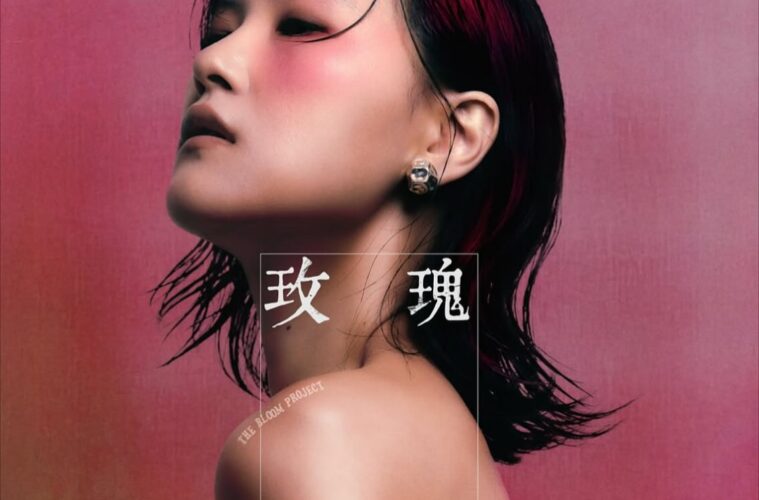Adai Song’s The Bloom Project is a work of rare vision and meticulous artistry—a striking synthesis of Chinese musical heritage and contemporary electronic innovation. The album stands as both homage and reinvention: a feminist reinterpretation of 1920s Shanghai shidaiqu, the once-daring blend of Chinese folk and Western jazz, now reimagined through a 21st-century lens of electronic pop, alternative soul, and global sound design. Every track is a testament to Song’s dual identity as both cultural bridge and sonic architect, where tradition meets the pulse of the future.
The opener, “A Lost Singer”, immediately establishes the album’s ethos of reclamation and transformation. Drawing from the 1937 classic “Tianya Genu,” Song turns nostalgia into agency. Piano and bass lay down a steady, introspective foundation, while the intertwining of erhu and violin captures both solitude and resilience. The rhythmic design is deliberate yet breathing—more heartbeat than drumbeat—creating a sense of inward motion that mirrors the song’s lyrical theme: the woman no longer wandering but claiming her destiny.
“Night Shanghai” brings the project’s urban pulse into focus. Originally a 1947 standard that captured the paradox of postwar glamour and loneliness, Song recontextualizes it for modern metropolises. A deep house rhythm anchors the track, wrapped in shimmering synths and punctuated by guzheng phrases that flicker like city lights. The bassline grooves with subtle restraint, while electronic textures evoke both the neon intensity and emotional detachment of nightlife in Beijing or New York. The result is hypnotic: a track that feels both ancient and neon-lit, both intimate and cinematic.
On “Make Way,” the transformation of the classic “Rose, Rose, I Love You” is audacious and inspired. The rose, once a passive emblem of beauty, now becomes a symbol of autonomy. Here, Adai Song’s production reaches a peak of sonic complexity: pipa, Japanese koto, and shamisen coexist with Western strings, electric guitar, and deep house synths. The percussion, built around layered gongs and electronic kicks, creates a lush rhythmic field that fuses continents and eras. Every frequency feels intentional, the mix spacious yet dense with meaning.
“I, I Want” injects a modern confidence into the album’s emotional core. Its rhythmic structure flirts between trap and hip-hop, while traditional Chinese instruments weave playful motifs that punctuate the lyrical dialogue. The interplay between bold female vocals and softer male responses unfolds like a sonic dance—flirtatious, teasing, yet underpinned by power. It’s a declaration wrapped in groove: the sound of a woman rewriting pop’s vocabulary of desire.
With “Carmen 2025,” Song pushes her conceptual and rhythmic ambition further. Using Bizet’s motifs as a launchpad, she merges Chinese percussion with EDM’s kinetic structure, transforming opera into digital rebellion. The guzheng solos, distorted and stretched, act almost like electric guitar leads in a rock anthem. The drop hits with visceral force, yet beneath the energy lies precision—the rhythmic layering mirrors the narrative of a woman breaking free from societal strictures. The track’s architecture feels both theatrical and club-ready, balancing chaos and control.
“Wuxi Tune” continues the fusion of genres, introducing UK Garage rhythms and jazz inflections. Saxophone lines glide between guzheng plucks and syncopated electronic drums, evoking the improvisational spirit of jazz within an electronic framework. The groove is fluid yet determined, echoing the song’s lyrical stance of self-direction. Song’s command of rhythm here is exceptional—elastic, expressive, and free from formula.
“Wild Thorny Molihua” revisits the folk standard “Mo Li Hua,” giving the jasmine flower new symbolic weight. The synthwork is intricate and cinematic, surrounding the shakuhachi’s breathy timbre with pulsating electronic textures. The contrast between delicacy and defiance defines the track’s emotional arc. Each beat feels like a petal opening—soft, yes, but edged with steel.
Closing with “River Run,” Song brings the album full circle with serenity and release. House-inspired basslines flow beneath transparent synth pads, while traditional instruments shimmer like sunlight on moving water. The composition’s rhythmic flow captures the essence of its message: letting go with grace, embracing transformation.
In The Bloom Project, Adai Song achieves something profound—she doesn’t merely blend East and West, acoustic and electronic, past and future. She lets them bloom together, organically, rhythmically, and unapologetically. The result is an album of exceptional quality, one that we’re proud to celebrate and host on our webzine. It stands as both cultural statement and musical triumph—a sonic garden where heritage and innovation thrive side by side.

